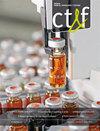催化裂化原料可裂性预测
IF 0.5
4区 工程技术
Q4 ENERGY & FUELS
引用次数: 0
摘要
本文基于微活性测试(MAT - Microscale Fixed Bed Reactor)的实验反应性数据和详细的物理化学表征,提出了一个预测原料裂解性(催化裂化过程中产生有价值产品的潜力)的统计模型。与原料性质相对应的最少数量的实验测试(通常在炼油厂提供)用于建立更完整的原料描述,包括化学成分和碳氢化合物分布。利用实测和计算的物理化学性质预测了不同MAT反应强度下主要产物的产率。不同的众所周知的函数相关的产量和转换(以前测试的实验数据MAT)允许汽油产量的最大值的评估。这个点被用作可裂性指数和原料潜力的定性点比较。来自哥伦比亚研究所Petróleo (ICP)的广泛原料数据库用于构建模型,其中包括以下原料:轻质原料-炼油厂和实验室从不同类型的哥伦比亚原油和2中切割的汽油。重质原料-哥伦比亚Barrancabermeja Ecopetrol S.A.炼油厂四个催化裂化装置(FCCU)的残留物或组合原料(汽油[GO]、常压塔底[ATB]、脱金属油[DMO]和按不同比例加氢处理的脱金属油[DMOH]的混合)。模型结果表明,对不同炼油厂原料的汽油等有价产品的预测精度在可接受的范围内,从而获得了可靠的可裂性等级。本文章由计算机程序翻译,如有差异,请以英文原文为准。
PREDICTION OF THE FCC FEEDSTOCKS CRACKABILITY
This paper presents a statistical model for prediction of feedstock’s crackability (potential to generate valuable products on catalytic cracking process), based on experimental reactivity data by microactivity test (MAT - Microscale Fixed Bed Reactor) and detailed physicochemical characterization. A minimum amount of experimental tests corresponding to feed properties (typically available at refinery) is used to build a more complete description of feedstocks including chemical composition and hydrocarbon distribution. Both measured and calculated physicochemical properties are used to predict the yields of main products at several MAT reaction severities. Different well known functions correlating yields and conversion (previously tested with experimental data MAT) allows the evaluation of maximum point of gasoline yield. This point is used like a crackability index and qualitative point comparison of feedstock’s potential. Extensive feedstocks data base from Instituto Colombiano del Petróleo (ICP) with a wide range of composition were used to build the model, including the following feeds: 1. Light feedstocks - Gasoils of refinery and laboratory cuts from different types of Colombian crude oils and 2. Heavy feedstoks - Residues or feedstocks combined (blending of gasoil [GO], atmospheric tower bottom [ATB], demetallized oil [DMO] and demetallized oil hydrotreated [DMOH] in several proportions) from the four fluid catalytic cracking units (FCCU) at Ecopetrol S.A. refinery in Barrancabermeja - Colombia. The results of model show the prediction of valuable products such as gasoline for different refinery feedstocks within acceptable accuracy, thus obtaining a reliable ranking of crackability.
求助全文
通过发布文献求助,成功后即可免费获取论文全文。
去求助
来源期刊

Ct&f-Ciencia Tecnologia Y Futuro
Energy-General Energy
CiteScore
1.50
自引率
0.00%
发文量
7
审稿时长
>12 weeks
期刊介绍:
The objective of CT&F is to publish the achievements of scientific research and technological developments of Ecopetrol S.A. and the research of other institutions in the field of oil, gas and alternative energy sources.
CT&F welcomes original, novel and high-impact contributions from all the fields in the oil and gas industry like: Acquisition and Exploration technologies, Basins characterization and modeling, Petroleum geology, Reservoir modeling, Enhanced Oil Recovery Technologies, Unconventional resources, Petroleum refining, Petrochemistry, Upgrading technologies, Technologies for fuels quality, Process modeling, and optimization, Supply chain optimization, Biofuels, Renewable energies.
 求助内容:
求助内容: 应助结果提醒方式:
应助结果提醒方式:


